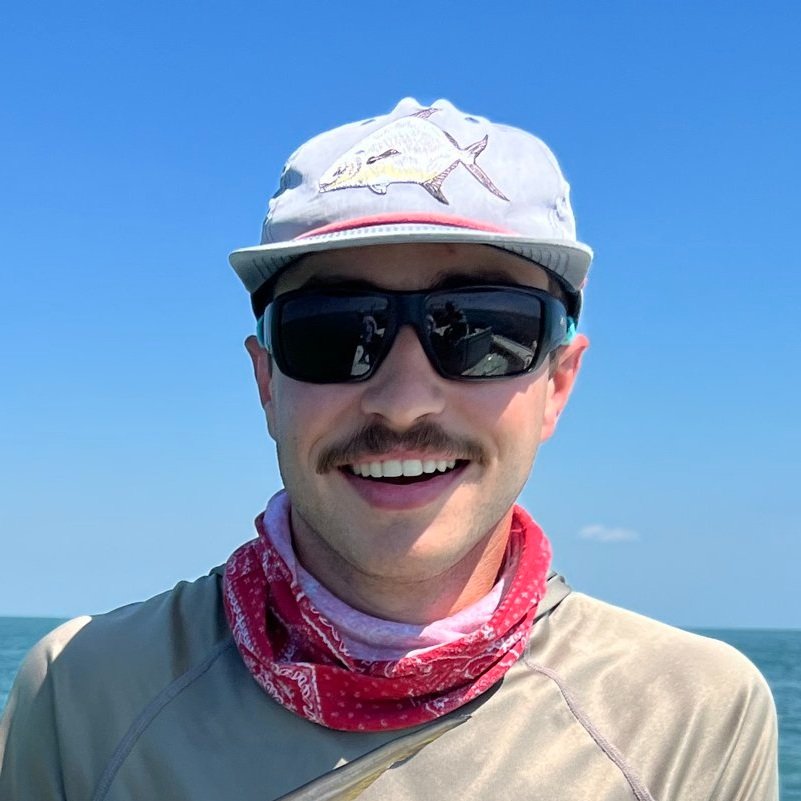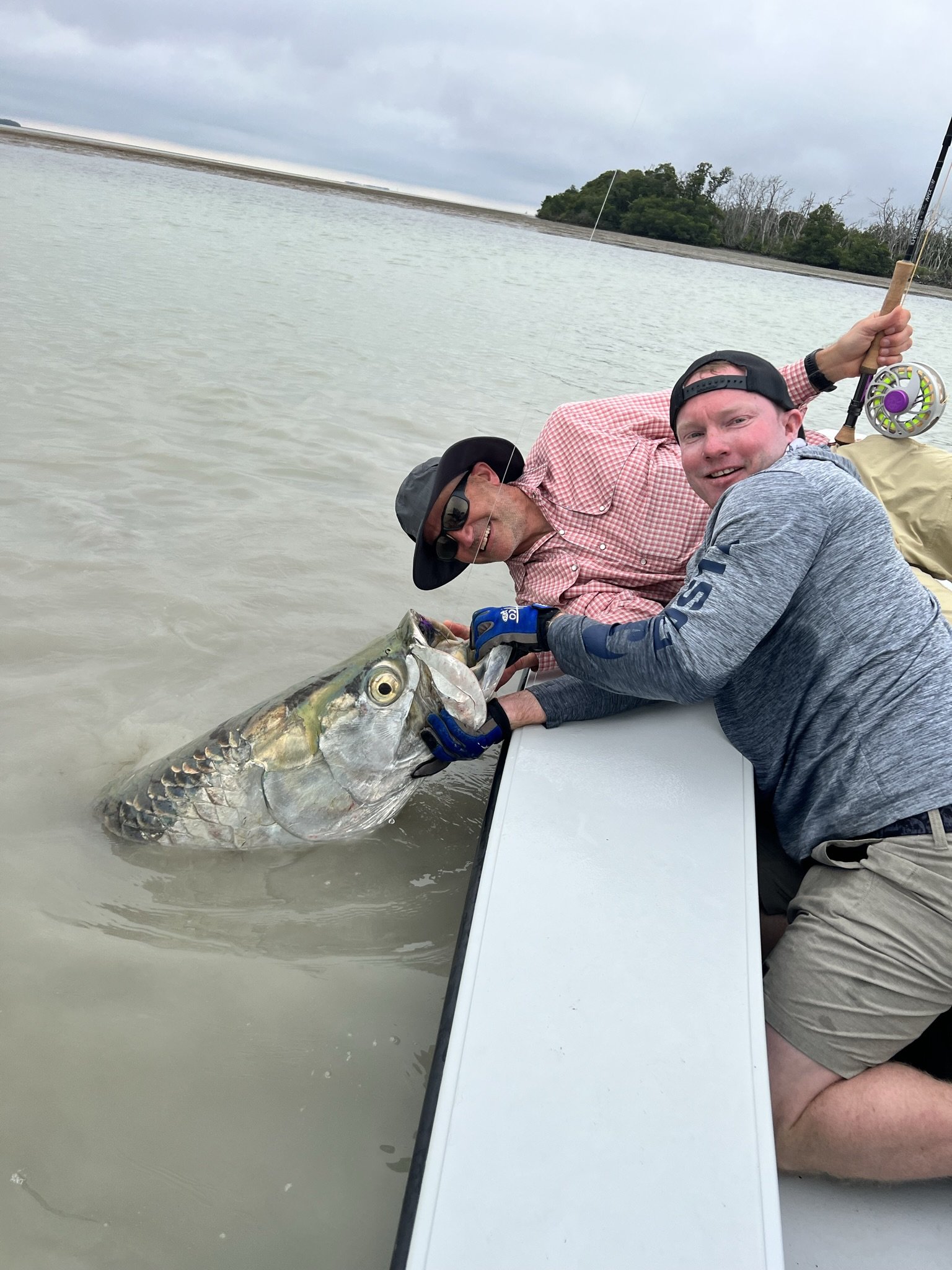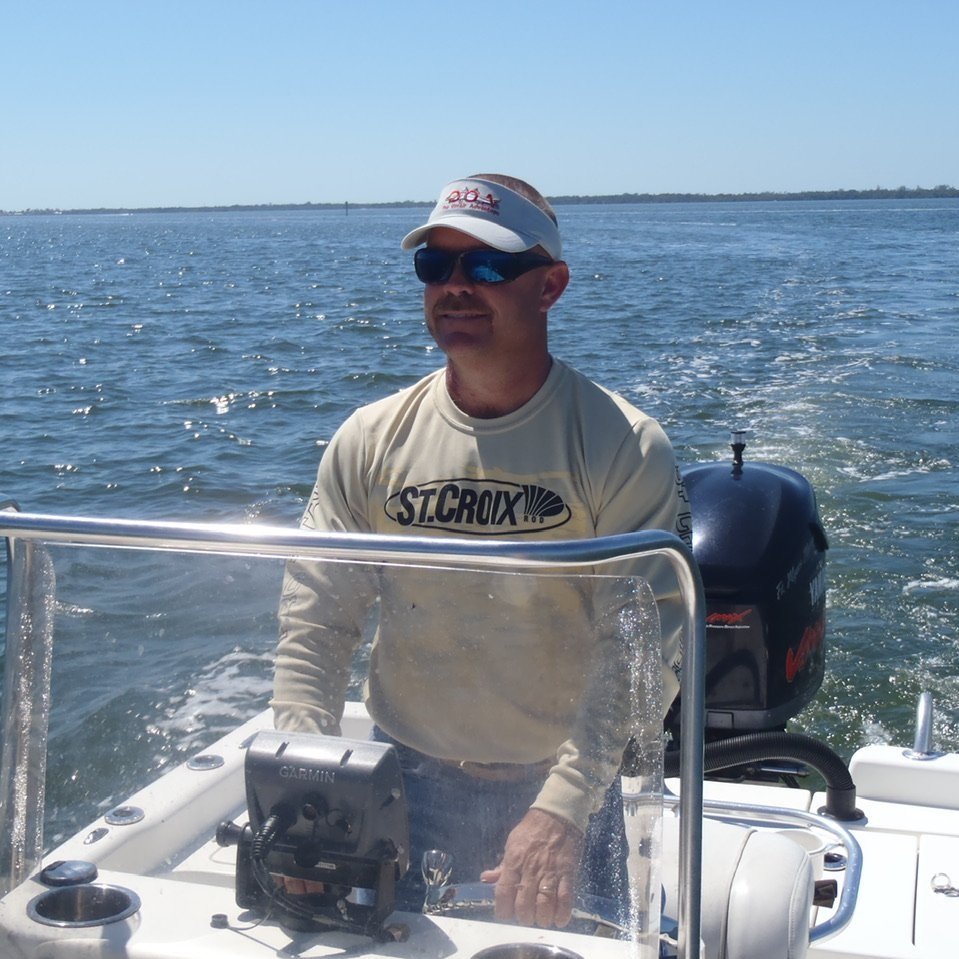Florida’s Premier Tarpon Fishing Destinations
Your Guide to Catching the Silver King Across Florida
A Silver King in tanned water, by All Water Expeditions.
If you remove spring break and crazy reptile-related headlines from Florida, Florida would still be a major search query on social media. Fishermen flock to and choose to live in the Sunshine State for the world-class year-round fishing. What makes Florida's saltwater fishing such a unique and challenging topic to write about is the varied coastline that the state possesses. It can vary significantly from county to county and mile to mile as bottom depth, temperature, and shoreline structure change faster than the weather. One constant and a fantastic metric to compare these coastlines is the tarpon. Tarpon (Megalops atlanticus) are a coveted game fish found throughout the Southeast, but in Florida, it is treasured with a fanaticism that rivals any college football team. Trust a former Floridian when I say there are few things more passionately loved than football.
Every tarpon angler has a secret spot and technique that they swear by. Still, for this article and to not raise the ire of any captains, we will be speaking in terms of general techniques and styles of fishing for the major areas of Florida. As the migrating fish school and feed based on many factors such as coastline and water temperature, each area approaches fishing for tarpon differently.
Top Tarpon Spots in Florida
The Florida Keys
A tarpon on Big Pine Key from Kingfisher Backcountry Charters.
Starting at the southernmost tip of Florida, we have the Florida Keys, an archipelago of coral islands that have inspired anglers from Ernest Hemingway to Jose Wejebe to patrol the crystal-clear waters in search of tarpon. Prospective anglers can break tarpon fishing in the Florida Keys into two styles: flats fishing and channel fishing. Flats fishing can be done from a skiff or wading to tarpon that are cruising the shallow water in search of food; presentation and stealth are key when targeting skinny water tarpon who have the infuriating ability to turn their snouts up at everything from imitator flies to live crabs. Fishing the channels between the islands where big tarpon will stage during the tide has been a tried and true method for anglers looking to hook into big fish. Tarpon will remain in the channels all year, feasting on crustaceans and fish that are pulled through the eddies the bridge pilings create. While channel fishing is usually a live bait pursuit, fly and artificial anglers can still target eddies and rolling fish, especially when the tide runs at full force.
The Florida Keys have a resident population of tarpon year-round, but peak fishing occurs from March to July when the fish transition from the Gulf to the Atlantic side or move up the coast.
The Best Guides in The Florida Keys
Capt. Eric Rodriguez is the owner of So Flo Charters guiding out of Islamorada, Florida. Captain Eric caters to all skill levels, making his trips ideal for families and anglers of any exptertise!
Captain David Dinsmore
From the brackish waters of Everglades National Park to the crystal clear flats of the Florida Keys, the opportunities are endless for sight-fishing Tarpon. Join Captain David Dinsmore in fishing the area’s inshore waters, flats, and backcountry for the silver King.
The Everglades and 10 Thousand Islands
A big Everglades tarpon caught with Ryan Booth
Combining these two fishing spots may seem disingenuous as both these South West Florida locales are enormous and love their autonomy. However, with the ability of most anglers to access both areas by boat ride, it makes sense to place them together. The Greater Everglades, consisting of Everglades National Park, ten thousand islands, and much of the watershed above, is the perfect combination of preservation and conservation. With thousands of creeks, bays, and bars dotting the mangrove islands and bridges, anglers have opportunities to fish for tarpon all year long. The warm water of the area causes tarpon to "roll." Rolling allows tarpon to gulp air that can aid their oxygenation when the water in the area doesn't hold enough dissolved oxygen. Anglers drift or pole their skiff in near silence, scanning the waters of the lagoons and creeks for the telltale "slurp" and wake-caused rolling tarpon, then comes the precision strike of placing a cast far enough in front of the fish that they see it, but not so close as to turn them away.
South West Florida holds resident tarpon tucked deep into the backwaters and canals of the area, but peak fishing is often considered from March through July.
The Best Guides in The Florida Everglades
Captain Ryan owns and operates Deep South Fishing Charters and his addiction to Tarpon fishing is serious. Book Ryan for the Spring migration!
Exploring the Florida Keys under Captain Ben Trainer’s guidance promises not only a thrilling fishing adventure but also an immersion into the natural wonders of the region. So, gear up and set sail for an unforgettable journey through the Tarpon fishing paradise known as 'The Florida Keys'.
Southwest Florida and Boca Grande
A tarpon caught in the pristine waters surrounding Boca Grande with Wild Fly Charters.
Next to the Florida Keys, Boca Grande Pass is the top contender for tarpon fishing in Southwest Florida. The narrow, deep water pass between Boca Grande Island and Cayo Costa Island creates a choke point for both bait and predatory fish that are migrating up and down the coast. The warm water of Gasparilla Bay and the cooler water of the Gulf of Mexico create a thermocline that helps to trap baitfish between the two temperature zones, making a tidal buffet for migration tarpon. While the pass itself can become a parking lot of anglers fishing for these deep-feeding tarpon, the islands' white sand beaches provide sight fishing opportunities for tarpon as they swim together in a formation often called "daisy chaining." Putting a lure or bait in front of a swirling vortex of tarpon while the skiff and wind bounces the angler is no easy feat, but the one cast that connects will be worth all the labor involved. For a shot at these migrating fish, look at the months of April through early July.
The Best Guides in Southwest Florida
Captain Mark Westra owns and operates Flattop Charters in Fort Myers and fishes year round for residential Tarpon in the bay areas surrounding Sanibel, Captiva up to the Boca Grande Pass.
Tarpon are the ultimate light tackle challenge, and the waters around Pine Island are home to some of the largest examples of these spectacular gamefish found anywhere in Florida. Let Captain Gregg McKee and Wildfly Charters show you what these beautiful waters have to offer!
Miami
The Miami Coastline
Just a hop, skip, and a jump from the Everglades and the Keys is Miami, with a sharp drop-off in bottom topography. Many anglers know the port of Miami as a destination for blue water species. However, the channels and ports of Miami and the Miami River are world-class tarpon spots. The deep channels hold fish all year, and the massive dock lights make fishing for these primarily nocturnal feeders much more doable for fly anglers. For Miami tarpon, fishing hits its peak between January and June.
The Space Coast
A Space Coast tarpon ready for launch, credit Florida Fly Co. Charters
The areas of the Indian River, Cape Canaveral, Mosquito Lagoon, and Daytona Beach are often grouped under the name of the Space Coast. This unique blend of Atlantic water and the enormous lagoon creates ideal fishing for many species, including tarpon. While juvenile tarpon can be found in the bays and estuaries of the Space Coast, the larger adult tarpon is beach or ocean-going. These larger migrating fish stay further offshore and can be sight-cast when rolling or daisy chaining. Tarpon will show up to the space coast in the summer when water temperatures reach 80 degrees or higher. The best months to find large tarpon in the area are June through September.
The Best Guides in Florida’s Space Coast
Captain Frank Catino has been a fly fishing guide and fishing charter provider for over 45 years. Captain Catino offers both local knowledge advantages as well as worldwide fishing experience, and Tarpon are his favorite species.
Captain Justin Price has lived and fished in The Mosquito Lagoon area since moving here at 9 years of age in 1986. He soon discovered his passion for saltwater spin fishing and fly fishing and has been fishing these local waters for well over 20 years.
Apalachicola
The area of Apalachicola, or "The Big Bend," is one of Florida's last wilderness holdouts. This area, known as the “Forgotten Coast" stretches for nearly 200 miles and is an unsung gem of Florida fishing. The area's shallow waters make for an excellent oyster and scallop habitat, which is perhaps why the tarpon fishery is only newly discovered. These shallow, slow-moving waters aren't just ideal for mollusks; they also create excellent tarpon fishing. As the tarpon make their final push northward, starting in May, they feed aggressively and with far less pressure than the more populated sections of the state farther south. From backwater oyster beds to white sand beaches, the Apalachicola angler can target 100-pound fish with fly in water usually less than waist deep.
May through August are the peak months for Apalachicola tarpon fishing. While the season may be brief compared to the rest of the state, we can count on lower fishing pressure and a high likelihood of being the only boat on that stretch of water.
Lucky Fly Charters putting clients on Apalachicola fish
The Best Guides near Apalachicola, Florida
Captain TJ owns and operates LuckyFly Charters and loves to share his passion for the Salt with his anglers. Tarpon along the Emerald Coast range from Indian Pass, to Port St. Joe, Crooked Island Sound, Panama City Beach, Destin, Navarre, and Pensacola, and TJ knows where to find them.
Tarpon along the Emerald Coast are an untapped resource. The tarpon usually start to show up in May and last into late August or early September. Captain Corby has had these fish dialed for decades and would love to show you where to find them.
Tarpon are an incredible game fish. They possess a near-human level of preference, with a mouth the size of a bucket and the ability to ignore a fresh finger mullet in front of them. Any fish that can hide in a wadable creek and then launch itself multiple feet into the air is enough to get the blood pumping of any fisherman. Luckily, for anglers traveling or living in Florida, tarpon can be targeted in various ways anywhere in the state. When looking to tie into a silver king from Panama City to Key West, Your big fish story starts here, with Guide Book. Tight lines.

















